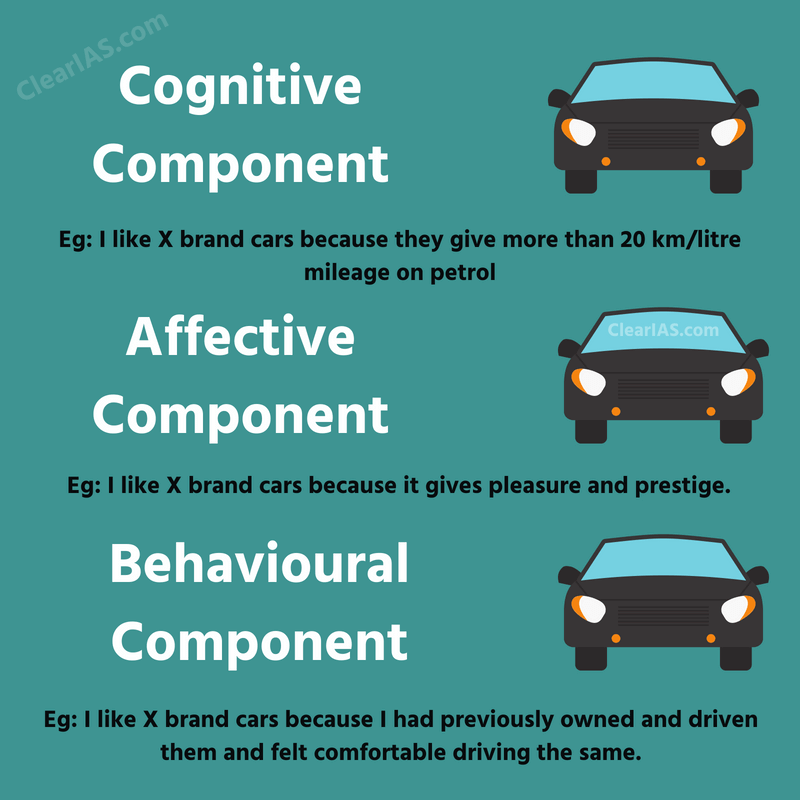Do you believe that God exists? What’s your opinion on politics? What are your favorite pizza toppings? These questions may be seemingly unrelated, but it’s likely you have strong opinions about all three of these topics. Developing opinions and forming likes and dislikes about everything around us are part of our daily lives. These attitudes affect the way we live and the choices we make.
Attitudes can be defined as evaluations of ideas, events, objects, or people. Attitudes are generally positive or negative, but they can also be uncertain at times. For example, sometimes we have mixed feelings about a particular issue or person. Regardless, attitudes are an important topic of study for social psychologists because they help determine what we do – what we eat, how we vote, what we do with our free time, and so on.
Every attitude has three components that are represented in what is called the ABC model of attitudes: A for affective, B for behavioral, and C for cognitive. Although every attitude has these three components, any particular attitude can be based on one component more than another.
In other words, each component can also be the answer to the question: where does an attitude come from? There are affectively-based attitudes, behaviorally-based attitudes, and cognitively-based attitudes.
Structure of Attitudes

Attitudes structure can be described in terms of three components.
- Affective component: this involves a person’s feelings / emotions about the attitude object. For example: “I am scared of spiders”.
- Behavioral (or conative) component: the way the attitude we have influences how we act or behave. For example: “I will avoid spiders and scream if I see one”.
- Cognitive component: this involves a person’s belief / knowledge about an attitude object. For example: “I believe spiders are dangerous”.
One of the underlying assumptions about the link between attitudes and behavior is that of consistency. This means that we often or usually expect the behavior of a person to be consistent with the attitudes that they hold. This is called the principle of consistency.
The principle of consistency reflects the idea that people are rational and attempt to behave rationally at all times and that a person’s behavior should be consistent with their attitude(s).
Affective Component

Affective component is the emotional or feeling segment of an attitude.
It is related to the statement which affects another person.
It deals with feelings or emotions that are brought to the surface about something, such as fear or hate. Using the above example, someone might have the attitude that they love all babies because they are cute or that they hate smoking because it is harmful to health. The affective component refers to the emotional reaction one has toward an attitude object. Think of someone – we’ll name her Alice – who has ophidiophobia (a phobia of snakes). A snake is an attitude object. Whenever Alice is exposed to a snake – whether she sees one or thinks about one – she feels extreme anxiety and fear.
Behavioral Component
Behavior component of an attitude consists of a person’s tendencies to behave’in a particular way toward an object. It refers to that part of attitude which reflects the intention of a person in short run or long run.
Using the above example, the behavioral attitude maybe- ‘I cannot wait to kiss the baby’, or ‘we better keep those smokers out of the library, etc.
Cognitive Component

The cognitive component of attitudes refers to the beliefs, thoughts, and attributes that we would associate with an object. It is the opinion or belief segment of an attitude. It refers that part of attitude which is related in general knowledge of a person.
Typically these come to light in generalities or stereotypes, such as ‘all babies are cute’, ‘smoking is harmful to health’ etc.
Attitude in Organisational Behaviour
Viewing attitudes as made up of three components – cognition, affect and behaviour– is helpful toward understanding their complexity and the potential relationship between attitude and behaviour. The object of an attitude is represented as a prototype in a person’s memory. Then an individual uses an attitude as a schema for evaluating an object. The person may assess the object as good or bad, positive or negative, favoured or not; then the person determines the strategy to take toward it. The accessibility of an attitude, or ease with which it is activated, affects its implementation. Personal experience with the object and the repeated expression of the attitude increases it accessibility. In this way, attitude-related information helps process complex information.